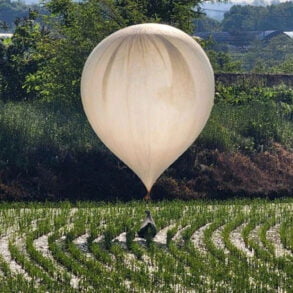
The Space Launch System rocket NASA needs to take astronauts all the way to the moon took a giant leap toward proving itself with the first uncrewed flight there in November.
The Marshall Space Flight Center, NASA’s propulsion center in Huntsville, Ala., developed the engine that powered the rocket. Now, the center is looking beyond the moon to speed up what will be a much-longer flight to the nation’s ultimate target of Mars. Nuclear-powered engines are getting serious scrutiny as the way to do that.
“We have a lead role with it,” NASA aerospace engineer Jason Turpin said in March. “We are NASA’s space nuclear propulsion lead.”
Turpin calls the effort an “all-hands-on-deck activity” with Marshall as the “hub for a lot of different partnerships” exploring nuclear engines. Other NASA centers, the U.S. Department of Energy, industry and universities and colleges are involved, he said. So is the Defense Department that has already developed nuclear engines to propel submarines under the sea.
NASA wants “robust and enduring access throughout the solar system,” Turpin said, and nuclear power can deliver that. It can deliver more performance than the best chemical fuels, he said. “When I say space nuclear propulsion,” Turpin said, “I’m really talking about two different propulsion systems: nuclear thermal propulsion and nuclear electric propulsion.”
Traditional rocket engines work by heating gases at high pressure and expelling the result out the back end of a nozzle. Nuclear power does the same thing, basically, but it doesn’t need a fuel and oxidizer combination to generate thrust. That means carrying less fuel to do the job and that increases performance. “You just need a gas or liquid you can heat up and you can generate thrust with that,” Turpin said. That’s because the reactor can be “a source of incredible heat you can use to agitate something else and get speed.”
“It allows flexibility,” he said. “I think it allows rapid and efficient transfers in (the vast space between the Earth and moon) and probably more capable deep-space science and exploration opportunities.” Faster trips to Mars are “important to things like crew safety and health,” he said. Less time in space means reducing exposure to space radiation and nuclear power could make it easier to get astronauts home.
Nuclear has its own challenges. The “really high, high temperatures” inside mean a materials challenge and a fabrication challenge to build and operate the reactor.
The important thing is rocket scientists and engineers are beginning to see what nuclear could do, Turpin said. There is a lot to explore starting with the current focus on fundamental technology and making that technology capable of doing what’s needed. “As of this year, we recently announced a partnership with DARPA (Defense Advanced Research Projects Agency) where we’re going to be going after the development of a prototype nuclear thermal rocket engine as soon as 2027,” he said.
“It’s important that people understand this is what Huntsville is historically known for and what the center is known for,” Turpin said. And it’s “an all-hands-on-deck activity.”
DARPA isn’t the only other team player. Partners include other government agencies, the Department of Defense, industry and universities. “It’s certainly a doable thing,” Turpin said, “but it is a big job.”
As for the current Artemis program, next comes a second flight around the moon with astronauts aboard this time. That crew was named this week and consists of astronauts Jeremy Hansen, Victor Glover, Reid Wiseman and Christina Hammock Koch. Meanwhile, companies are at work in Huntsville and elsewhere building the landers, habitats and other key hardware to put the next crew of American astronauts on the lunar surface in mission Artemis III.
Original Article: https://americanmilitarynews.com/2023/04/nasa-in-alabama-working-on-whats-next-nuclear-power-drive-for-spaceships/


